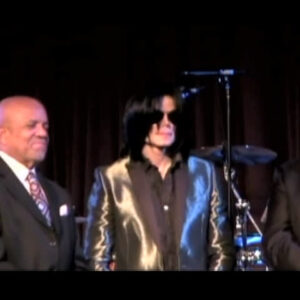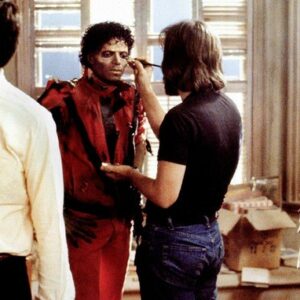Tina Turner, a name synonymous with resilience, empowerment, and transcendence, holds an iconic place in the annals of music history. Born Anna Mae Bullock, Turner’s transformation from a small-town girl with a tumultuous personal life to the “Queen of Rock ‘n’ Roll” is the stuff of legends. But what makes Tina Turner’s legacy more than just her music is the powerful storytelling she infused into every aspect of her artistry. Her music videos, in particular, became a visual medium where symbolic imagery reflected her personal journey, societal struggles, and triumphs of the human spirit.
The 1980s saw the advent of the music video as an essential tool for musical storytelling. MTV, launched in 1981, revolutionized the way artists connected with their audiences, and Turner was among the early visionaries who understood the potential of this medium. More than just promotional tools, her music videos became rich tapestries of symbolic expression, where themes of empowerment, identity, and spirituality took center stage.
Key Themes in Tina Turner’s Music Videos
Tina Turner’s music videos are more than just visual accompaniments to her songs. They offer layered narratives, brimming with symbolism that resonates on both personal and societal levels. Let’s explore the recurring motifs that make her videos timeless pieces of art.
Empowerment and Resilience
One of the central themes throughout Turner’s career is empowerment—a reflection of her own journey from a turbulent relationship with Ike Turner to reclaiming her career and identity as a solo artist. Her music videos often depict this sense of overcoming adversity, reclaiming one’s power, and standing strong in the face of challenges.
Take for instance “What’s Love Got to Do with It,” perhaps one of Turner’s most famous songs and videos. Here, we see a lone Tina walking through the streets, detached from the typical trappings of romance that the song’s title might suggest. The stark isolation in the visuals echoes the theme of independence from emotional and societal expectations. Tina’s choice to be alone amidst the busy street symbolizes her autonomy and self-reliance—breaking free from both emotional and external constraints.
Similarly, in “We Don’t Need Another Hero,” the post-apocalyptic setting is not just a backdrop; it serves as a metaphor for a world that has been through destruction and is seeking renewal. Turner, clad in warrior-like attire, is seen as a symbol of hope, strength, and resilience. Her character represents not just survival but the idea of thriving in a world stripped of traditional power structures. Through these visual cues, Tina Turner asserts the idea that individuals, particularly women, can emerge from chaos stronger than ever.
Spiritual and Mystical Elements
In many of Tina Turner’s music videos, there is a recurring motif of spirituality and mysticism, which ties into her personal journey toward spiritual enlightenment. Raised in a religious household, Turner later embraced Buddhism—a faith that became central to her philosophy of life. The visual storytelling in her music often reflects this blend of earthly struggles and ethereal transcendence.
A prime example is “Private Dancer,” where Turner plays the role of a dancer, trapped in a world of objectification. But within this seemingly bleak setup, there is a deeper search for meaning—suggesting that even in spaces of exploitation, there exists the possibility for personal transcendence. The dancer, though confined by her environment, radiates an inner strength that points to a higher plane of existence beyond the material world.
The recurring imagery of fire, light, and elemental forces in many of her videos—such as the desert landscape in “Better Be Good to Me”—further underscores the spiritual subtext. Fire, often a symbol of transformation and purification, can be seen as a reflection of Turner’s own personal journey, burning away past trauma to emerge reborn and more powerful.
Gender and Identity
Tina Turner’s on-screen persona has always been a fascinating exploration of gender and identity. Throughout her career, Turner often straddled the line between traditional femininity and fierce independence, challenging and affirming gender roles in equal measure. This duality is vividly expressed in the imagery and costuming choices throughout her music videos.
For instance, in “What’s Love Got to Do with It,” Turner’s clothing—oversized jacket paired with a short skirt—defies the conventional image of femininity, instead projecting a powerful, androgynous look. The imagery suggests that she is not defined by her romantic relationships or her appearance, but by her strength and independence. It’s a visual declaration that she belongs to no one but herself.
In “We Don’t Need Another Hero,” Turner adopts an almost mythic persona, dressed in armor-like clothing, signaling a departure from traditional female vulnerability toward something more commanding. This blend of softness and steel became one of Turner’s visual trademarks, making her an emblem of both empowerment and femininity in an era that was still grappling with evolving gender norms.
Notable Examples of Symbolism
Turner’s music videos are filled with rich symbolism that offers deeper insights into the songs themselves, as well as the broader themes of human experience. Some of her most iconic music videos use visual storytelling to explore ideas of love, freedom, and identity.
“What’s Love Got to Do with It”
One of the most iconic music videos of the 1980s, “What’s Love Got to Do with It” captures Tina Turner walking through the streets of New York, detached from the people around her. The video conveys themes of independence and emotional isolation. The imagery of Tina walking alone contrasts with the bustling city, symbolizing her detachment from the emotional connections typically associated with romantic relationships. She’s not dependent on anyone; she’s walking her own path. The juxtaposition of the urban environment with Turner’s isolation serves as a powerful metaphor for emotional independence, rejecting the idea that love is the central, defining force in a woman’s life.
“We Don’t Need Another Hero”
Set in a dystopian world reminiscent of Mad Max Beyond Thunderdome, “We Don’t Need Another Hero” is filled with striking, post-apocalyptic imagery that symbolizes liberation from societal collapse. Tina Turner appears as a warrior-like figure, dressed in futuristic, armor-like attire. The desolate landscape and the chaos surrounding her reflect a world in need of change, with Turner standing as a beacon of hope and resilience. The video’s symbolic use of light, particularly the glow surrounding Turner, suggests a spiritual liberation, a call for a new beginning in a world ravaged by violence and destruction.
“Private Dancer”
In “Private Dancer,” Tina Turner plays the role of a woman trapped in a life of objectification and exploitation, symbolized by her role as a performer in front of faceless men. The music video’s imagery reflects the themes of objectification and personal freedom, with Turner’s character performing for others but internally yearning for escape. The stark contrast between the glamour of her performance and the dark, empty environment she performs in symbolizes the often-hidden loneliness and struggle of women who feel trapped by societal expectations. The video uses the metaphor of performance to highlight the broader theme of how individuals, particularly women, are often expected to perform roles in society that are at odds with their true selves.
Visual and Cinematic Techniques
Tina Turner’s music videos are as much about the visual experience as they are about the music. The use of color, lighting, costume, and set design plays a crucial role in amplifying the symbolism in each video.
Use of Color and Lighting
The use of color and lighting in Turner’s music videos is often symbolic, reflecting the emotional tone of the song. For instance, in “What’s Love Got to Do with It,” the natural, earthy tones of the city landscape contrast with Turner’s vibrant energy, symbolizing her independence from the traditional trappings of love and romance. The muted colors emphasize the rawness and reality of her message, rejecting the glossy, romanticized depiction of relationships often seen in pop culture.
In “We Don’t Need Another Hero,” the use of warm, golden light surrounding Turner serves as a visual representation of her role as a figure of hope and guidance in a dystopian world. The lighting enhances the video’s theme of spiritual and emotional liberation, suggesting that Turner is a source of light in a dark and chaotic world.
Symbolic Costume and Fashion
Tina Turner’s fashion choices in her music videos are not merely aesthetic—they’re deeply symbolic. The oversized jackets and short skirts in “What’s Love Got to Do with It” project both strength and femininity, defying conventional gender norms. Turner’s bold fashion statements, including her iconic spiked hair and dramatic accessories, became symbols of her larger-than-life persona—a woman who was unapologetically herself, defying expectations and embracing her individuality.
In “Private Dancer,” the glittering dress Turner wears while performing for a faceless audience symbolizes the way women are often put on display and objectified. Yet, despite the superficial glamour, there is a deeper sense of vulnerability and entrapment, reflected in Turner’s performance. The costume becomes a metaphor for the duality of being both admired and imprisoned by societal expectations.
Impact on Popular Culture
Tina Turner’s influence on the music video landscape cannot be overstated. Her use of symbolism, visual storytelling, and thematic depth set a new standard for artists, inspiring future generations to use music videos as a medium for artistic expression, rather than mere promotional tools.
Artists like Beyoncé, Madonna, and Lady Gaga have all drawn inspiration from Turner’s pioneering use of music videos to tell complex, emotionally resonant stories. Turner’s ability to infuse her videos with themes of empowerment, resilience, and identity paved the way for female artists to explore similar themes in their own work.
Beyond the world of music, the symbolism in Turner’s videos has had a lasting impact on broader social narratives. Her portrayal of strong, independent women has resonated with generations of fans, particularly women, who see themselves reflected in Turner’s journey of personal empowerment and self-discovery.
Conclusion
Tina Turner’s legacy is more than just her powerful voice and legendary performances. Her music videos serve as a testament to her ability to communicate deeper messages about identity, power, and resilience through symbolic imagery. Whether it’s the quiet defiance of “What’s Love Got to Do with It,” the dystopian hope of “We Don’t Need Another Hero,” or the introspective struggle of “Private Dancer,” Turner’s videos go beyond mere visual entertainment—they are powerful narratives that continue to inspire and resonate with fans across generations.
Through her music videos, Tina Turner not only entertained but educated, offering a visual language that spoke to the universal themes of human existence. She used symbolism not just for visual appeal, but to communicate deeper truths about the human condition, making her one of the most influential and enduring artists of her time.





